Banana Kush Cake Automatic is an exciting plant to grow, and gardeners of all levels can find success with this feminized, automatic variety. The yields are high, and the flowers display colourful hues throughout flowering. The effects are stimulating and soothing, while the terpene profile combines sweetness with spice.
Flowering stage: 50 days
Total time, seed to harvest: 78 days
Final yield: 115 grams
THC content: 24.97%
Banana Kush Cake automatic (also available in feminized seeds) is an impressive combination of exciting new genetics. This strain is 75% indica and 25% sativa, with inherited traits from Wedding Cheesecake, Banana Kush, and Hindu Kush Automatic.
For outdoor gardeners, Banana Kush Cake does just as well in cold climates as it does indoors, and there is no doubt that gardeners looking for the next hot new cultivar will enjoy the slight variations of phenotypes.
Our indoor grow area has been optimized for cultivating cannabis, and we were excited to begin our grow cycle, because each day brought us closer to being able to sample our flowers. For lighting, we used multiple 1000w Green Power Phillips HPS lights, which were mounted to the ceiling in a fixed position, well above the fragile new seedlings.
Moving air and exchanging air are important aspects of the growing process. Our airflow system included multiple small fans, which gently moved the air around the inside of the growing area, and various inline fans were also positioned around the cultivation area. These fans help remove the odorous air from the room by sucking it through a carbon filter to remove any unwanted smells.
Environmental controls are just as important as moving the air. During the course of our Banana Kush Cake automatic grow, we kept strict parameters on both temperature and humidity. Throughout the cultivation process, we adjusted the humidity at different stages.
Commonly, a higher humidity level is kept during the seedling and vegetative period, with relative humidity dropping during flowering to be proactive against mould potential. The room temperature was kept at 23°C with the lights on and 21°C with the light off.
Germination & seedling
Our Banana Kush Cake automatic seed was germinated between two moist paper towels covered by two ceramic plates. For the duration of the entire cycle, we set our lighting schedule to 18 hours on / 6 hours off. Once we saw the white taproot sticking out approximately 3 mm from the cracked seed, it was moved into a 1-litre pot filled with BAC Lava Mix soil.
Our seeds were placed approximately 5 mm under the soil, with the tap root pointing down. Within 24 hours, we saw the Banana Kush Cake automatic break the soil’s surface. Because seedlings thrive in higher humidity compared to other parts of the grow, we started with RH set to 65%.
We wasted no time on getting our Banana Kush Cake automatic off to a good start and started week one by top-feeding our seedling 100 ml of pure water around the base of the stem by hand. Our plant was only 3 cm tall but was still large enough to attract insects. We did not see any problems, but we proactively released the predator insect, Hypoaspis Miles. This beneficial insect feeds on fungus gnats and thrip pupae.
Vegetation
At the start of week two, we saw roots coming from the bottom of our 1-litre container and decided to transplant our Banana Kush Cake automatic into a 3-litre container. We then gave the soil 100 ml of water around the base of the stem. The plant had doubled in height, but the root system was still young, and we did not want to flood the roots. It is essential to know that excessively moist soil can kill fine root hairs and lead to nutrient imbalances.
To strengthen the young stems of our plant, we kept a steady breeze moving around it. We avoided a direct wind, but we could visibly see the plant moving. This back and forth causes the stem to thicken, which will be beneficial later.
Cannabis is phototropic and similar to sunflowers, where the plants will follow the sun’s position throughout the day. Our light is in a fixed position three metres above our growing bench, but plants not directly under it will lean towards it. To strengthen the stems, we moved our plant a quarter turn each day, which caused the plant to adjust the other way, creating thicker and more robust cellular walls.
By week three, our plant already had five nodes of growth. The lower branches did an excellent job of reaching out and up for the light. The colour was a vibrant green, and each of the large fan leaves were perky, soaking up the light to complete the vital process of photosynthesis.
We started adding Bio Grow nutrients into the water before feeding our plant. Our solution registered an EC of 1.6, and then we adjusted the pH to 6.2 and fed the plant. As the week progressed, watering became more frequent, but the volume of water was maintained at 100 ml.
Our IPM continued by releasing two more types of beneficial insects, Amblyseius Cucumeris and Amblyseius Californicus. These help to control and eliminate thrips larvae and two-spotted spider mites, respectively. Even though we did not see any pest pressure on our Banana Kush Cake automatic, we wanted to keep it that way.
Visually inspecting our plant at the start of week four, we saw roots coming from the bottom of our container, so we transplanted our Banana Kush Cake automatic into a 5-litre container. With this change, we increased the amount of solution we gave our Banana Kush Cake automatic to 150 ml per watering.
Our plant was now 26 cm tall, and with an experienced eye, we could see it was starting to show the preliminary signs of flowering. As automatic plants will begin flowering on their own, it is not required to change the light schedule for our Banana Kush Cake automatic and continue with our Bio Bloom nutrients until we can see other signs that the flowering process has begun.
It had been a few weeks since we released our Hypoaspis Miles to control fungus gnats and thrip pupae, so we added another satchel to the base of the plant. Internodal spacing began to increase, and the spacing of our Banana Kush Cake allowed for good airflow between the canopy.
Flowering
In week five, we saw the tell-tale signs of a flowering female cannabis plant, the stigmas. Our Banana Kush Cake automatic had initiated flowering, and we made some adjustments on our end to give the plant optimal conditions for bud growth.
First, we lowered the humidity to 60% and flushed our medium using 1,000 ml of pure water. This is meant to flush out excessive mobile nutrients from the soil to prevent nutrient toxicity, and we continued the week using Bio Flower nutrients at an EC of 1.7. We gradually increased the solution from 150 ml to 300 ml throughout the week.
Another sign we noticed was an explosion of growth. Our plant shot up to 46 cm, which was 20 cm taller than the week before.
In week six, we began seeing the most amazing bud formation. The pace of bud growth was exceptional, and it was where we would hope it to be, but it was the colour that made us stare in amazement! As our Banana Kush Cake automatic was showing us a rich green colour over the stems and leaves, the buds were a deep purple colour. The contrast between the two colours was sharp, unique, and something we had difficulty turning away from.
By week seven, the plant had reached 89 cm, more than three times the height from three weeks ago. The open structure and sparse leaf cover allowed all branches to receive maximum light without the need for defoliation or training. The beautiful purple buds on our Banana Kush Cake automatic continued to stack and were now adding trichomes over their surface.
The watering volume was increased to 500 ml, and satchels of Ablyseius Cucumeris were used to destroy any thrip larvae that may have been lurking. We also deployed another satchel of Amblyseius Californicus to deter the potential of two-spotted spider mites. Thus far, we have not experienced any negative pest pressures in the garden, and plan to keep it that way!
In week eight, we noticed that the vertical growth had slowed, adding only 5 cm from the week before. All of the growth potentials was now going towards the flowers. The bracts remained a deep dark purple, and now some of that purple was radiating down the leaves at the base of each bud. The colour continued to astound us. Large spherical colas were beginning to form from each branch tip.
As part of our S.O.P., we flushed our soil with pure water at a volume of 1,000 ml on the first day of this week, with regular feedings at 500 ml thereafter. Although we knew our Banana Kush Cake automatic would finish in the upcoming weeks, there was still enough time for potential bug problems. To prevent fungus gnats and thrip pupae, we released one more satchel of Hypoaspis Miles.
Week nine saw almost no vertical growth but did see a large amount of swelling in the buds. Our main cola had become overly heavy and required that we put a stake in the soil for support. This was easy and allowed our Banana Kush Cake automatic to focus its entire energy on bud production. Because of the increased size of our buds, we lowered the humidity to 58%.
Another thing we liked about this automatic version was the quick finishing time. To gauge where we were in relation to reaching maturity, we began scoping the trichome heads. By inspecting the colour, growers can understand the ideal harvest window. Clear, milky, and amber are the colours we are looking for in the trichome heads, and we saw only clear and milky heads, which meant this plant was not yet ripe.
As the large purple colas on our Banana Kush Cake automatic were dense and moist. Throughout week ten, we decreased the relative humidity levels to 52% to lessen the chance that bud rot may occur. The leaves were now turning a lime green colour, which is another indicator the plant is about to senesce, and the end of the cycle is near. This did not affect anthocyanin production, which is the pigment responsible for the beautiful purple colour of the buds.
To start week eleven, we inspected the trichome heads again. This time, our Banana Kush Cake automatic had a more significant proportion of amber heads than clear heads, and the majority were milky. A natural indicator that our plant was almost ready to harvest, and we immediately cut out all nutrients from our solution.
We flushed the soil using 1,000 ml of pure water for the remainder of the grow and collected the run-off because we did not want the soil to absorb the remaining leached-out minerals and nutrients. We saw a depletion of nutrients in some of the leaves, which confirmed that our flushing attempt had an effect.
Week twelve was the week we decided to harvest our Banana Kush Cake automatic. Our plant had grown to 97 cm tall. There was an open structure to the plant, but the buds were dense and stacked in spear-like cones on the end of each branch. Lower buds were equally as dense and were just as purple as the upper colas.
The smell gradually increased during the grow cycle. The odours did not overpower the carbon filter, which helped us keep this grow nice and discreet. The branches on our plant were thick and robust and did not require additional support.
The flowers of our Banana Kush Cake automatic had plenty of trichomes covering the extraordinarily coloured foliage. We decided to harvest when we saw 10% clear trichome heads, 80% milky heads, and 10% amber heads. This combination indicates peak ripeness, and we were ready to begin the drying and curing process.
Harvest
It had been a successful grow cycle, and we now transitioned into the harvesting and curing phase. Just as we spent time and effort controlling certain factors during the growth stages, we will continue to keep tight environmental controls in the drying area to maximize the potential of our flower.
To prepare the plant for the drying phase, we first removed the large fan leaves from the plant. We then looked for any leaves without trichomes and removed them. Smaller sugar leaves with trichomes were left on the plant and can be collected after trimming for edibles or extractions.
Our Banana Kush Cake automatic had a thick main stem, so we used industrial loppers to cut the main stem at the base of the soil. We then brought our whole plant to the drying room, where it was hung upside down and left for the moisture levels within the flowers to decrease.
The drying room was kept dark to avoid degradation of the trichomes and cannabinoids by light. The optimal temperature to dry cannabis is 15.5°C, and the ideal humidity to dry cannabis slowly is 60% RH. Of course, these were the conditions we maintained to dry our Banana Kush Cake automatic flower.
In addition to the correct environmental parameters, it is also essential to have a slight breeze moving around the drying plants. We used one of the fans from our growing area to serve this purpose. It is important not to have the fan blowing directly on the drying plants, as this could dry them too fast and lock in a bad “hay” taste to the cannabis.
We left the Banana Kush Cake automatic to hang dry for 14 days before we started checking the branches to gauge when to trim. On day 20, the small branches were snapping when bent, which was our cue to begin trimming.
The plant was removed and cut into smaller pieces for easier trimming. Once we manicured our buds, we placed the Banana Kush Cake automatic flower into our glass jars for curing. However, we did not place the lids on the jars until day two of the curing process.
The lid was removed from the jars several times daily for the first two weeks, allowing trapped moisture to escape. The fresh Banana Kush Cake automatic flowers still had moisture in the centre of the buds, which slowly gets released and escapes through this burping process. Curing is the art of slow drying to the desired moisture levels. The lids were left off of the jars for roughly an hour each time.
Our Banana Kush Cake automatic continued to cure for another four weeks. For these final four weeks, the lid was removed only once daily, but for the same one-hour duration. The smell grew stronger each day we removed the lid on our Banana Kush Cake flowers. This was a good sign that we had adequately dried and cured our flowers to an aesthetically pleasing standard.
After six weeks of curing in jars, we had reached the desired moisture level in our buds. A small sample was set aside for lab testing, but first, we obtained a final dry weight for our Banana Kush Cake automatic. It took 78 days to go from seed to harvest, and we finished with 115 grams of dry cannabis flower.
The trimmed and cured harvest of Banana Kush Cake automatic was then placed into our C-Vault at 62% humidity, and a small sample was sent out for cannabinoid testing. When the results came back from the laboratory, we discovered our Banana Kush Cake automatic had tested with a THC level of 24.97%.
Terpene profile
Banana Kush Cake automatic exudes a delightful skunky, banana aroma, offering sweet and spicy notes. The dominant terpenes of this strain include myrcene, caryophyllene, and limonene.
The first two terpenes on the list are commonly associated with spicy and hashy odours, both of which are mildly present in Banana Kush Cake. Limonene, on the other hand, is often associated with citrus profiles. While the citrus aspect does come through slightly in the overall smell of the dried flower, it comes through more potent in the flavour profile.
One difference the flavour contributes to the overall profile is a smooth, rounded creaminess. Aside from this minor nuance, the terpene profile is indicative of the flavour profile. The palate experiences sweetness, banana, skunk and spiciness concocted in a complimentary, mouth-watering fashion.
The effects of Banana Kush Cake automatic often sink in immediately. The onset is an uplifting cerebral effect that offers a minor wave of energy and enthusiasm. Not long after this initial rush, the indica genetics begin to work their soothing, body-relaxing magic. The cerebral buzz eases away into a dreamy state perfect for carefree thinking. Novices, do be warned; Banana Kush Cake automatic is a potent strain and should be slowly titrated.
The outcome
Overall, Banana Kush Cake automatic (also available in feminized seeds) was an easy-to-grow strain. We had not seen a plant with such captivating purple colour before. The entire experience put a smile on our faces, not to mention an excellent yield in our C-Vault.
Throughout the cultivation cycle, our plant proliferated and maintained a solid frame that didn’t need much support or fuss. Add in the bonus of being an automatic plant, and we feel confident that growers, novice to expert, will enjoy what Banana Kush Cake automatic offers.
The buds were big, beautiful, and potent. The profile was pleasing, and the effects were a welcome change in perspective from the daily grind. Our Banana Kush Cake automatic had a high calyx-to-leaf ratio, making trimming quick and requiring minimal effort to strip and manicure. Overall, we finished with 115 grams of dried flower, with an impressive THC level of 24.97%.
Growing cannabis can be challenging at times, but we think everyone will find success with Banana Kush Cake automatic. If growers have never experienced a strain with such captivating colour, we highly recommend trying this in the garden next.
Please let us know in the comments If you have enjoyed this grow report, and be sure to check out our other grow diaries on the blog. Let us know what strain you would like to see grown next in the comments, and always, happy gardening!







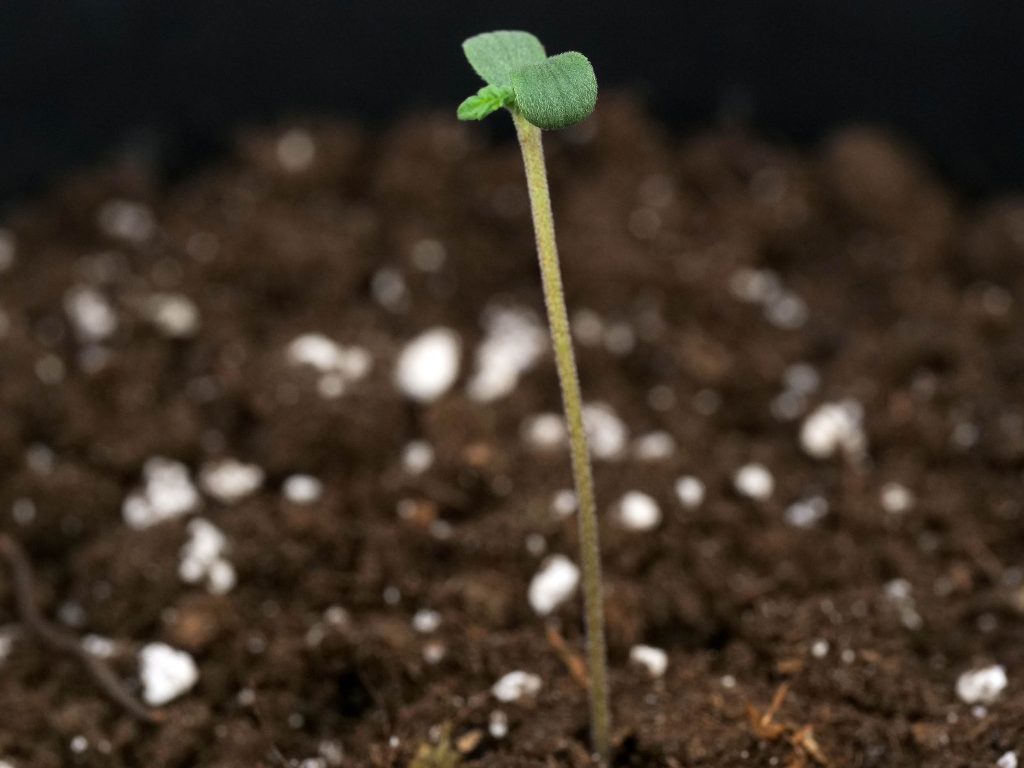
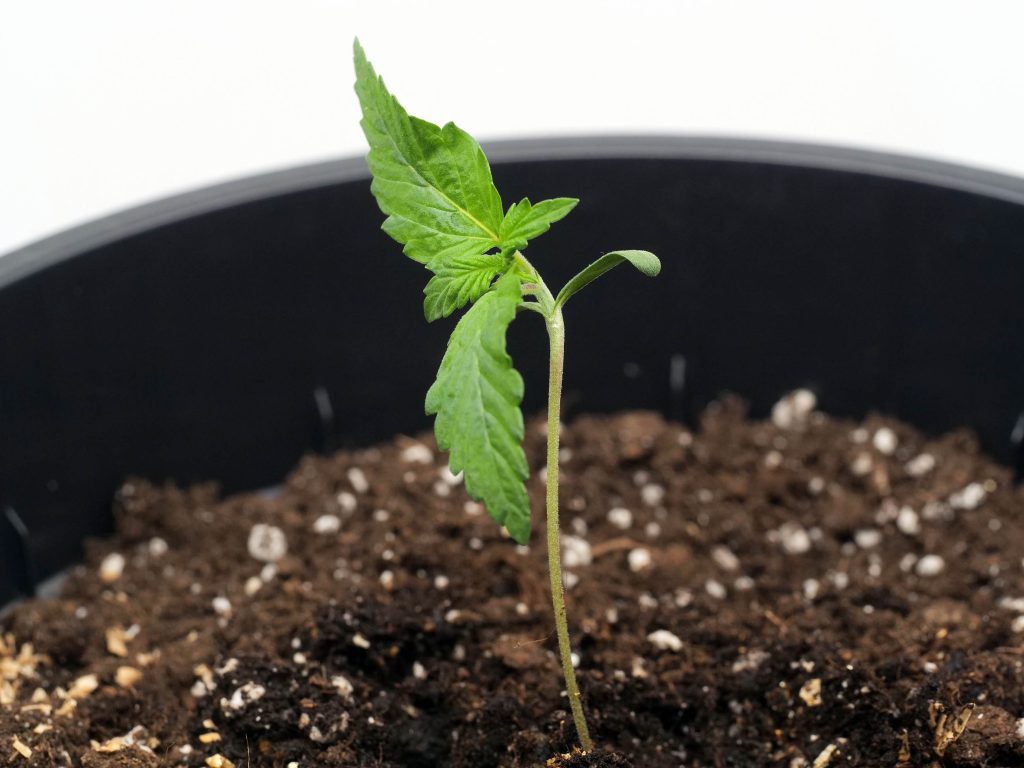
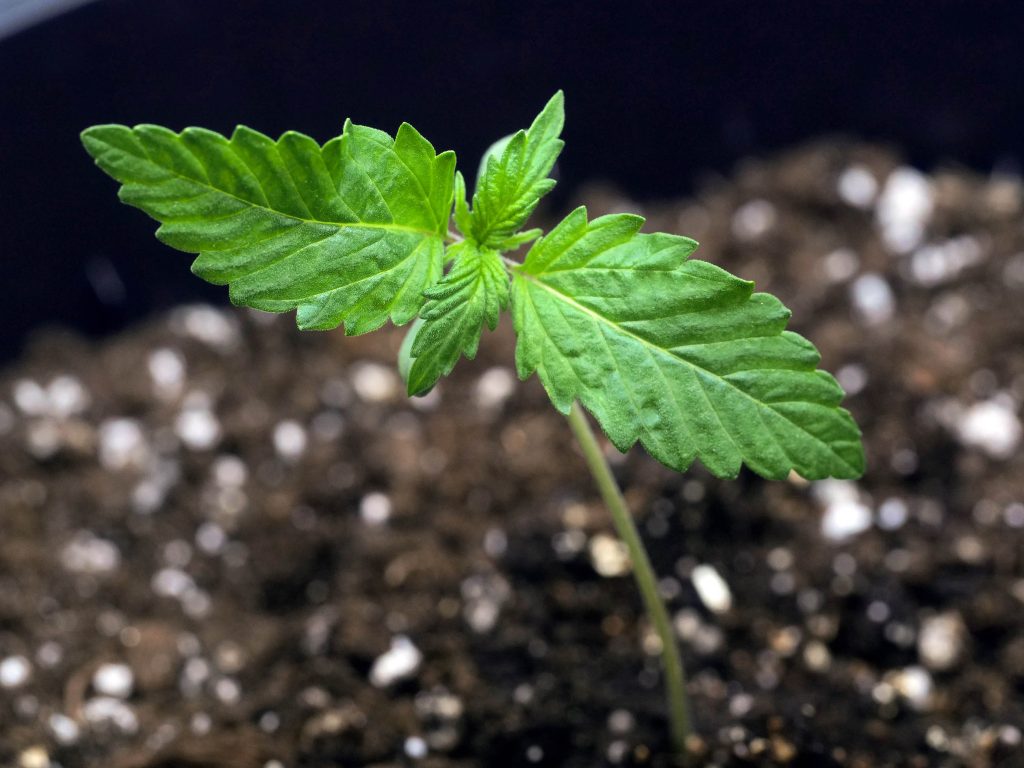


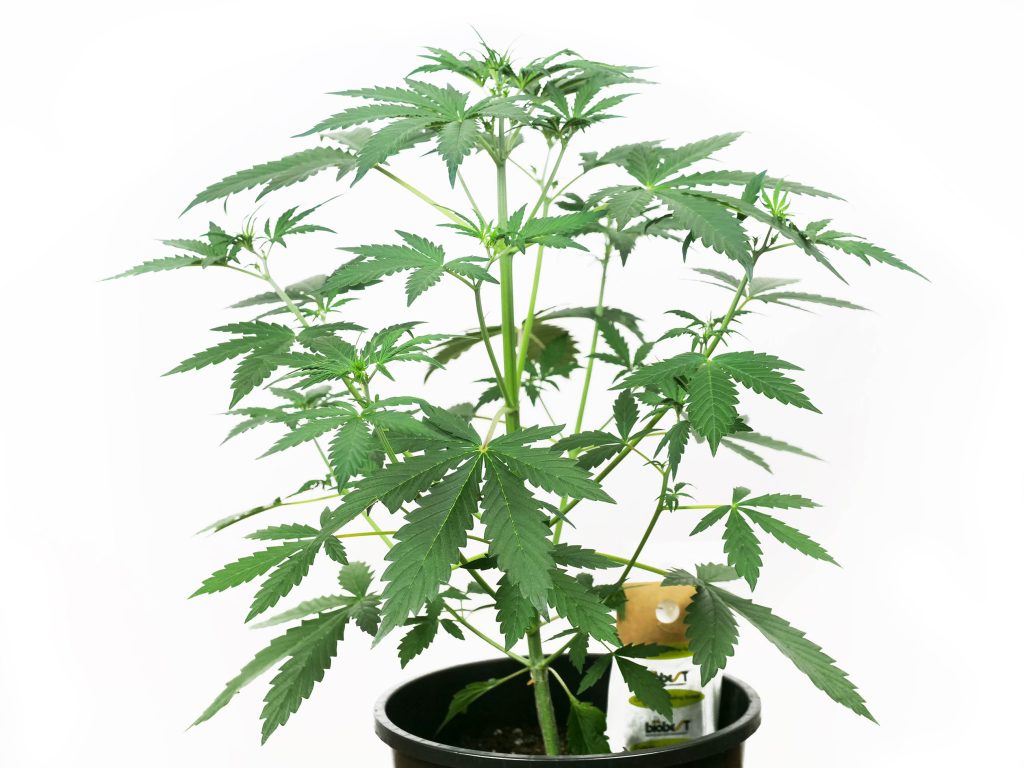


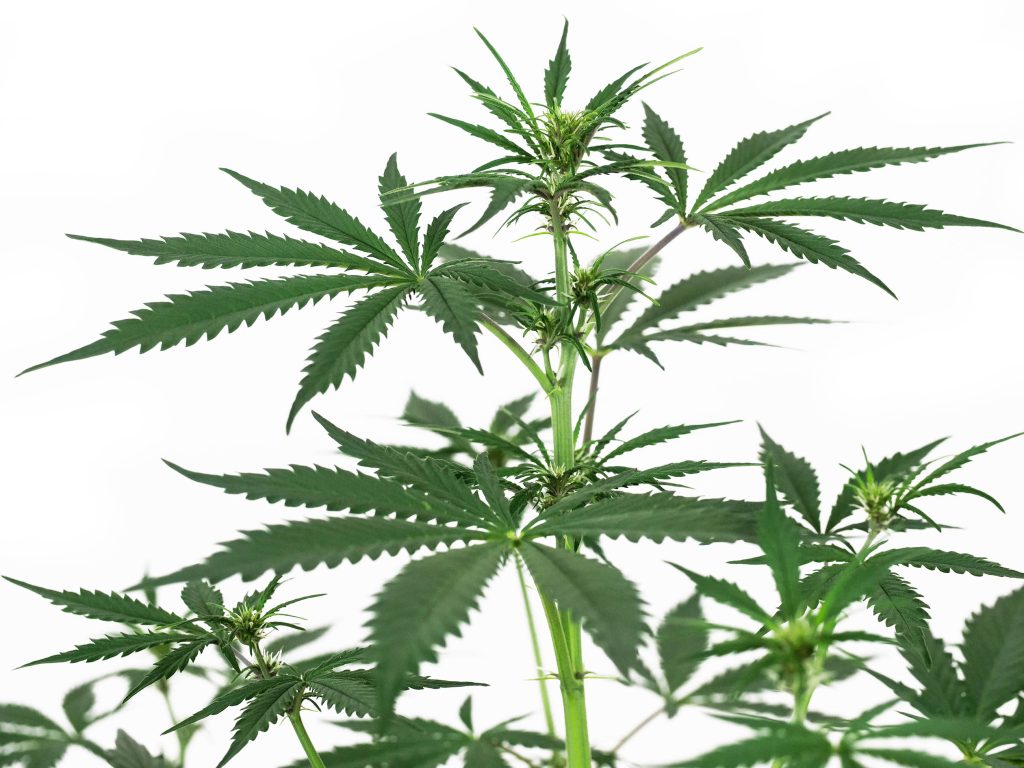


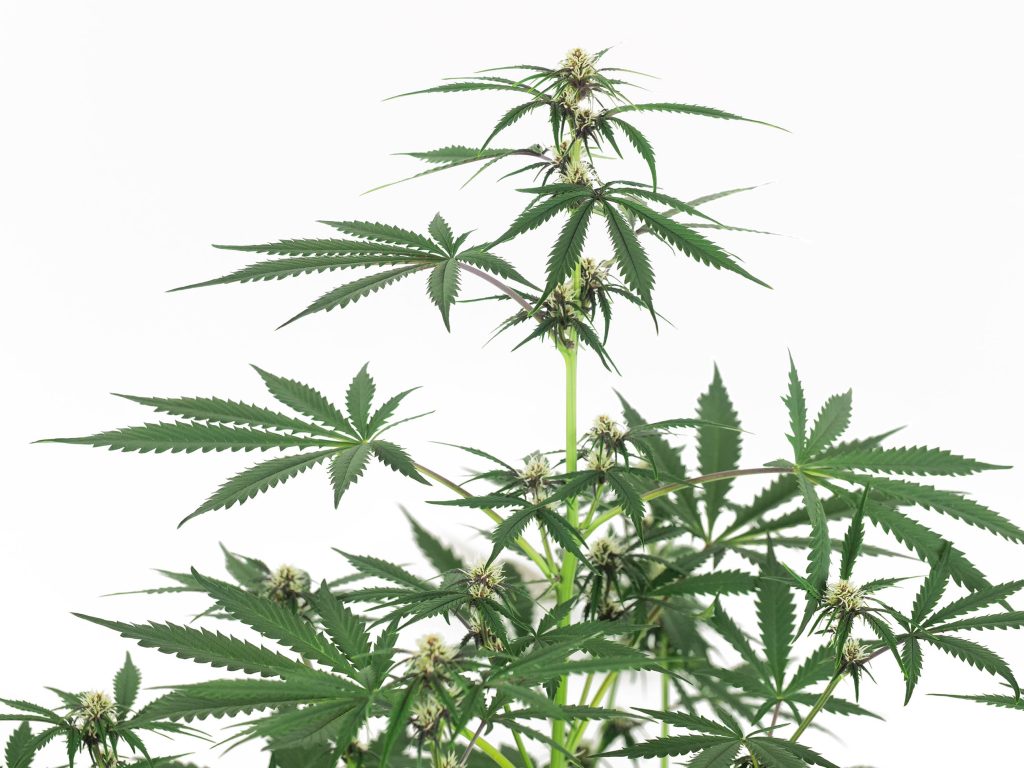


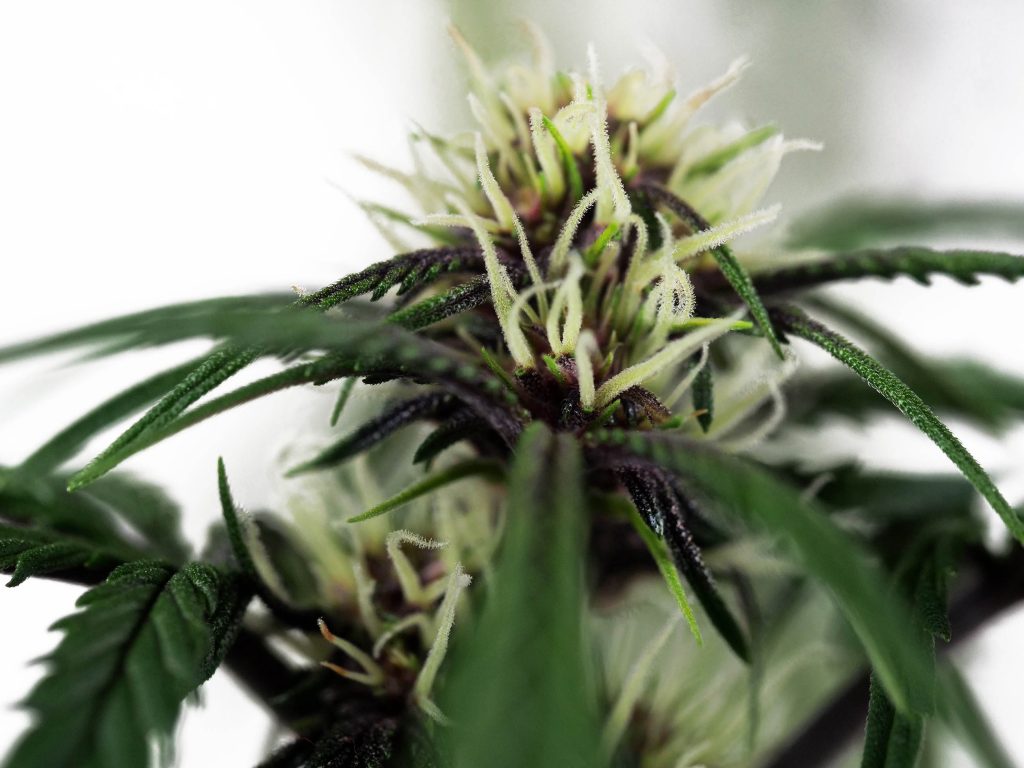
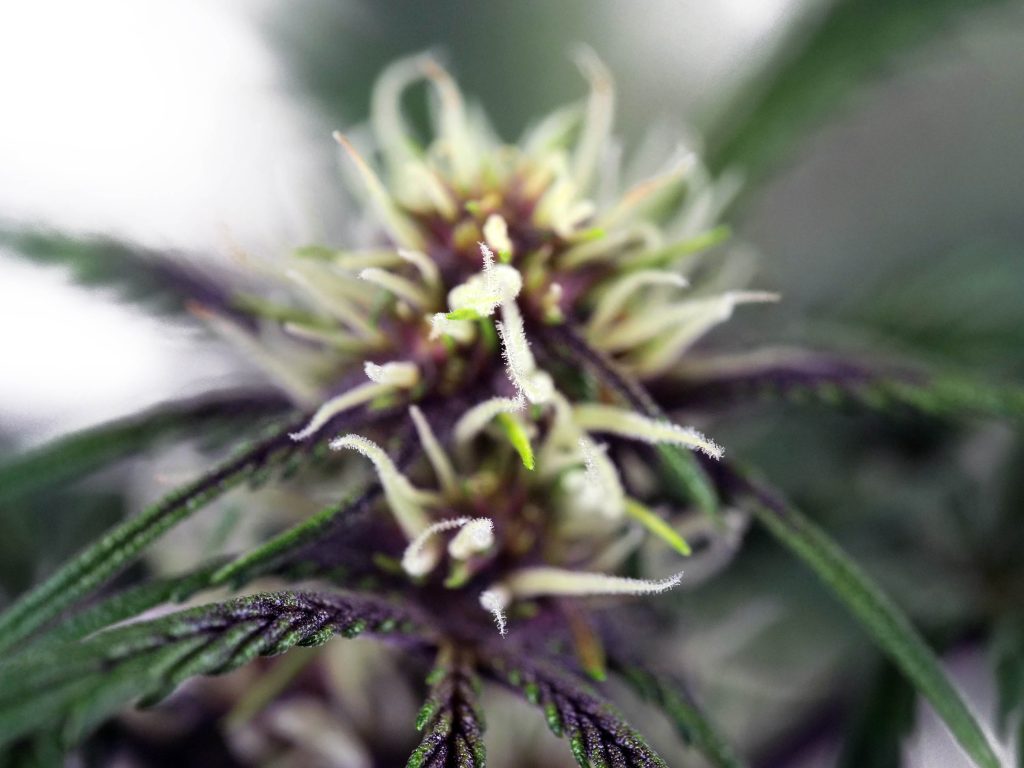
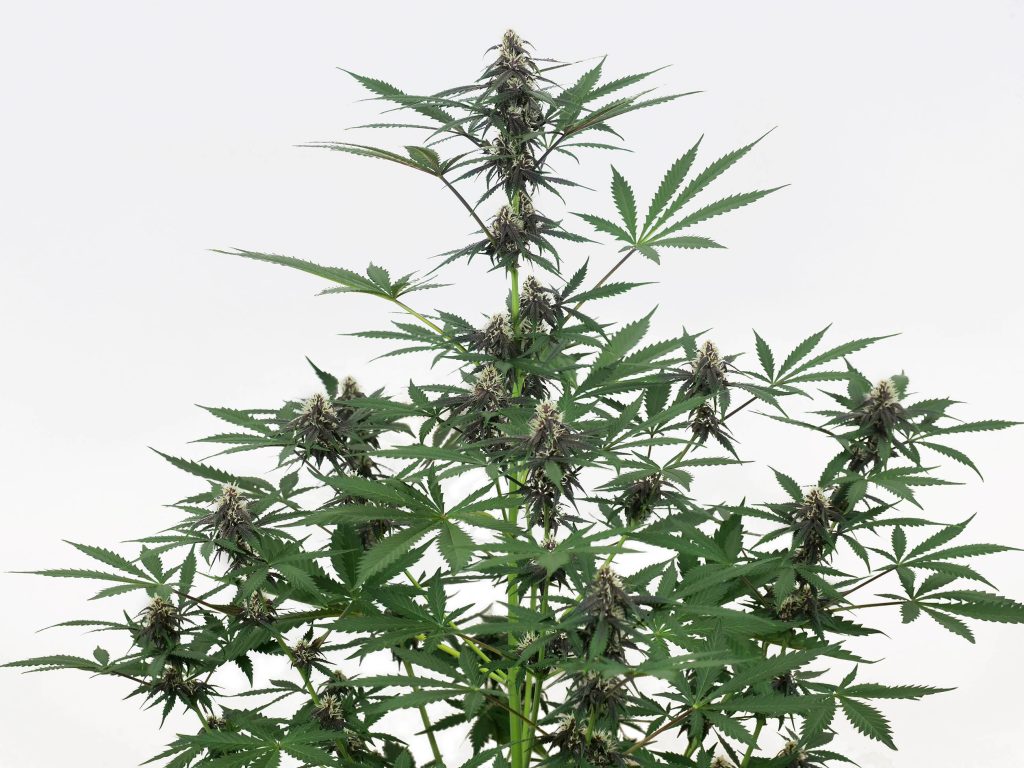

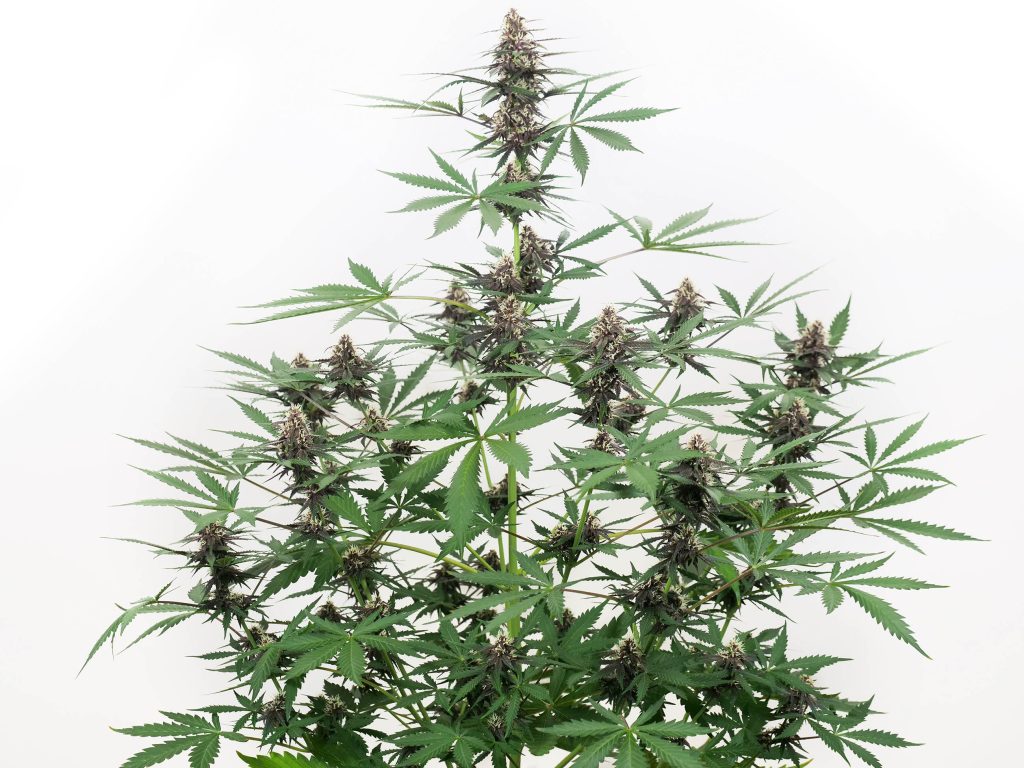


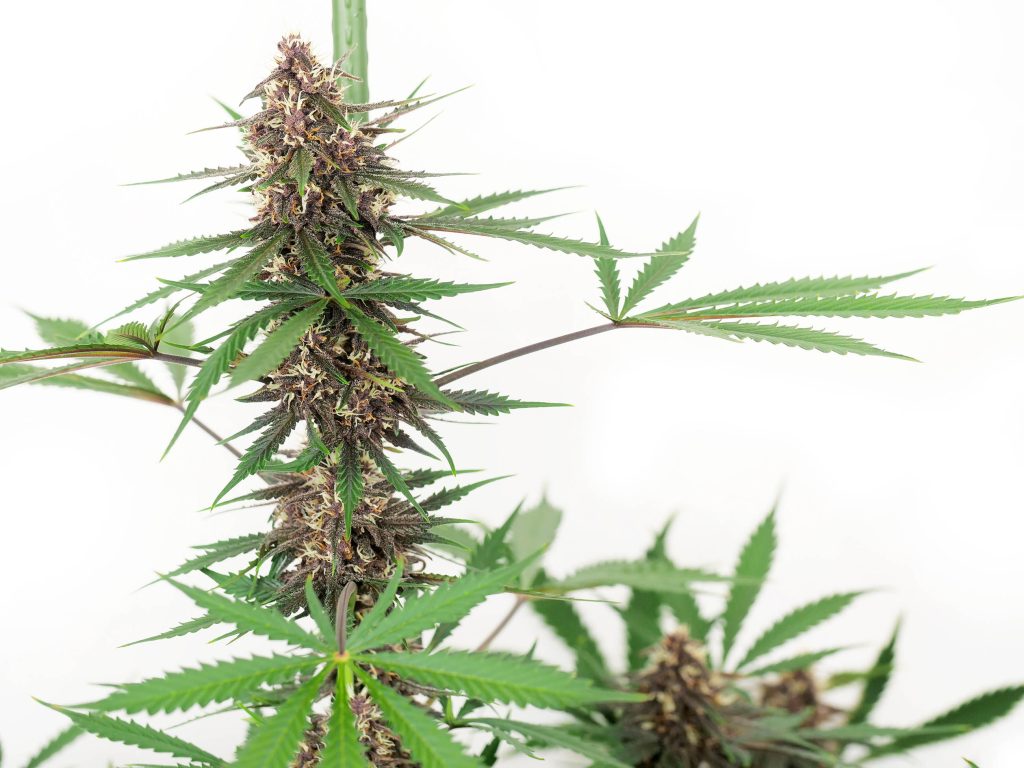
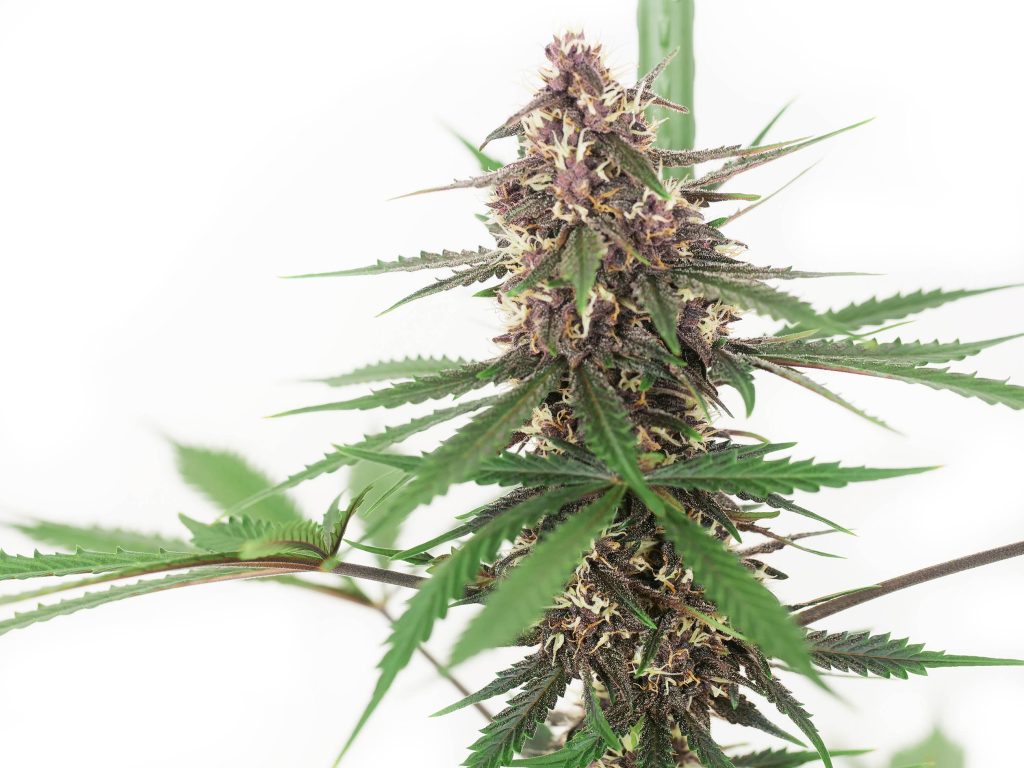
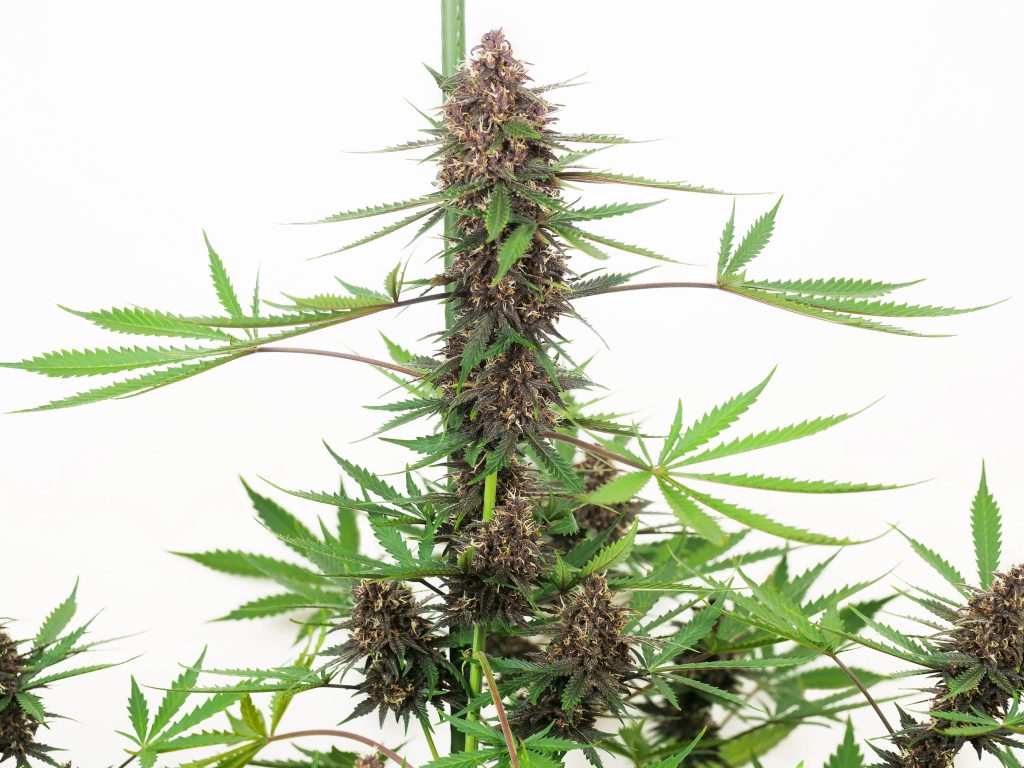
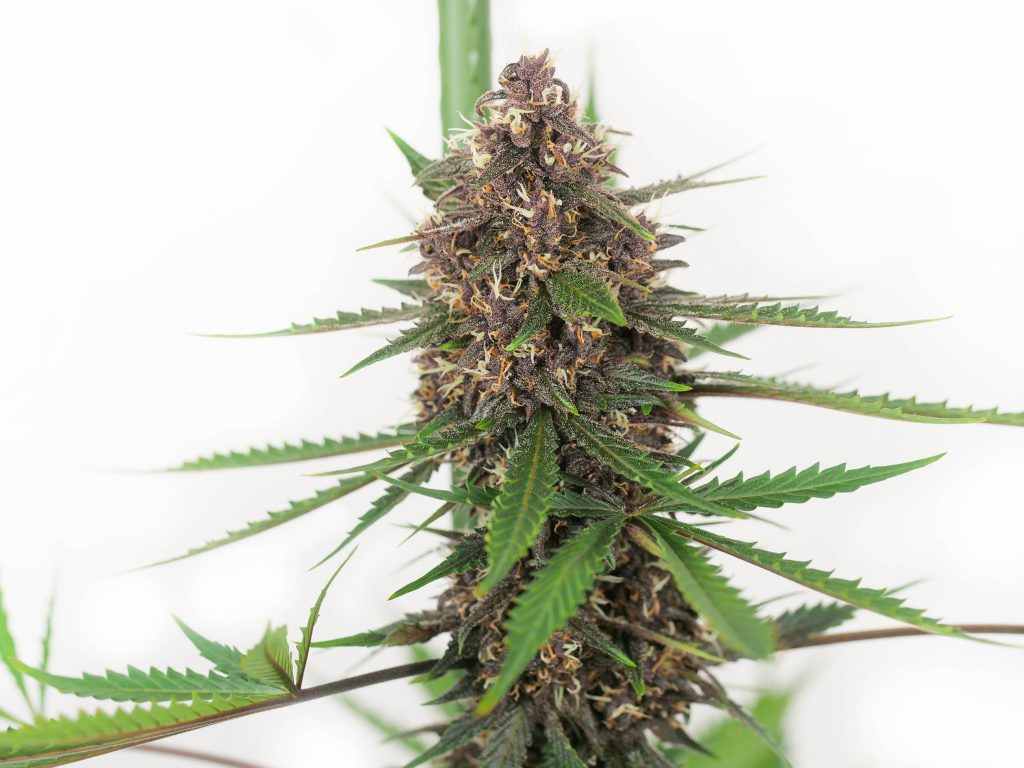
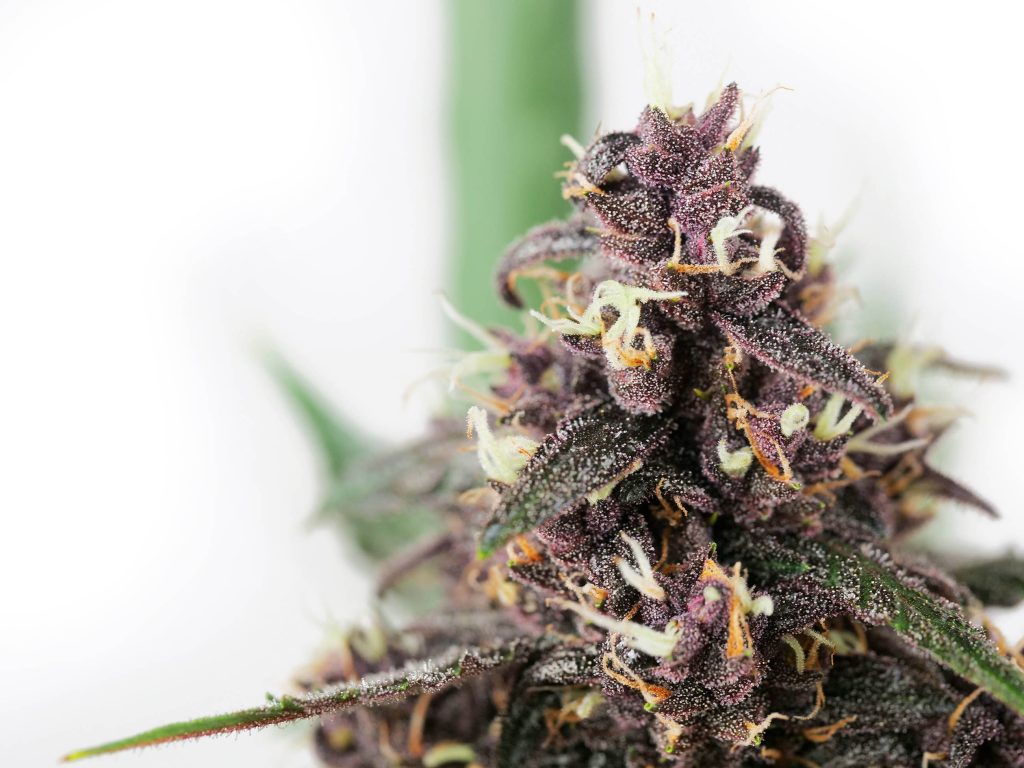

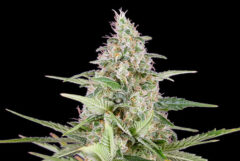
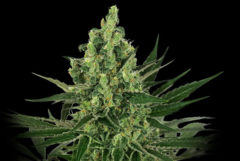

Hi Sensi Seeds,
I’m curious as to why you reverted to a 12/12 light regime on your Banana Kush Cake Automatic at around week 5. Did a shorter light period reduce yields ?
Is there any credibility that reducing to 12/12 will ‘jump start’ stubborn autos into flowering or be able to speed up the flowering process once initiated.
Thanking you in anticipation & keep up the good work,
Kind regards,
Kevin.
Good morning Kevin,
I hope you’re having a great day,
In our grow report, we have grew automatic plants alongside photoperiod plants.
To ensure optimal growth for the photoperiod plants, we have switched the lighting schedule to 12/12.
Thanks!